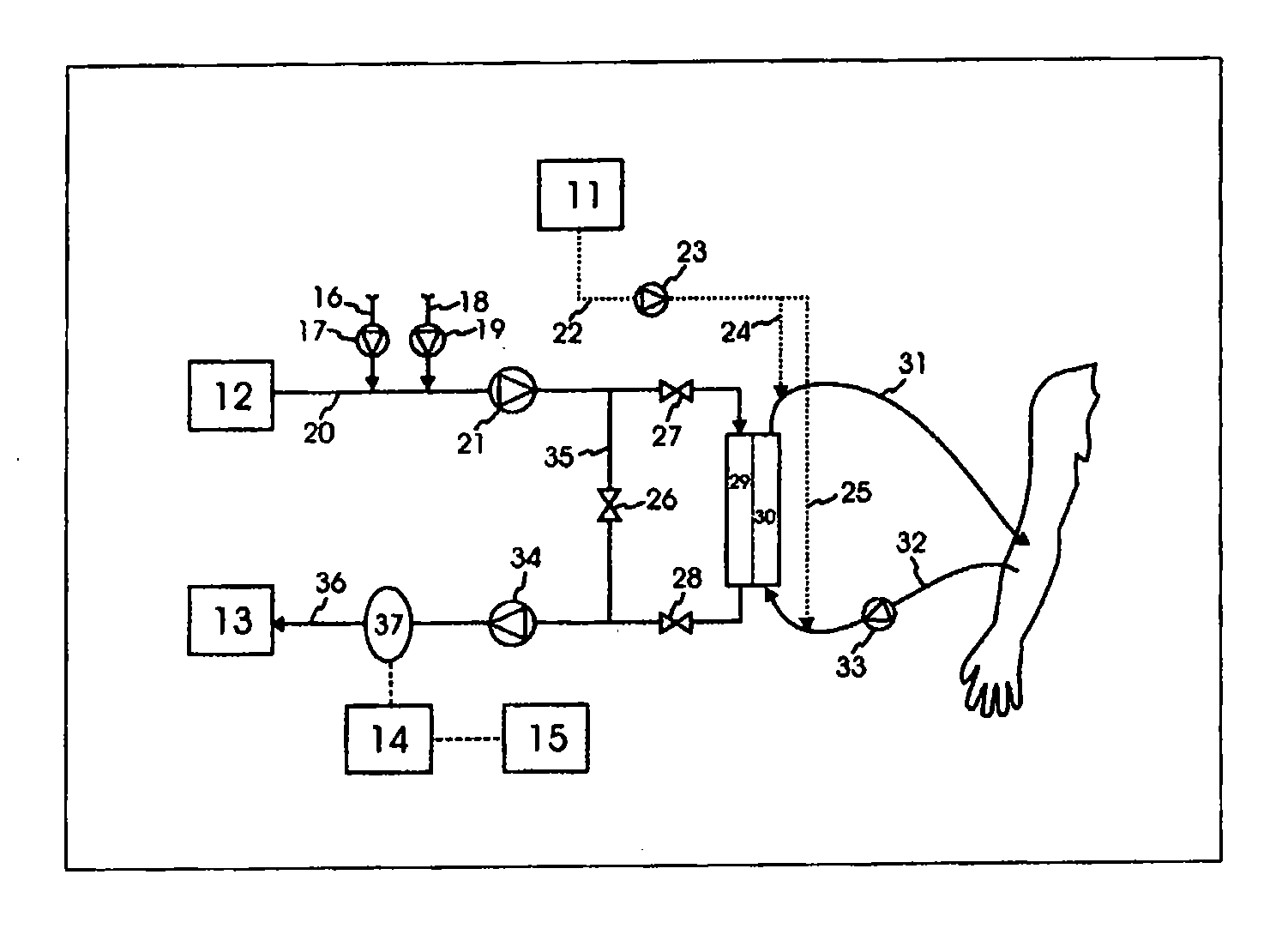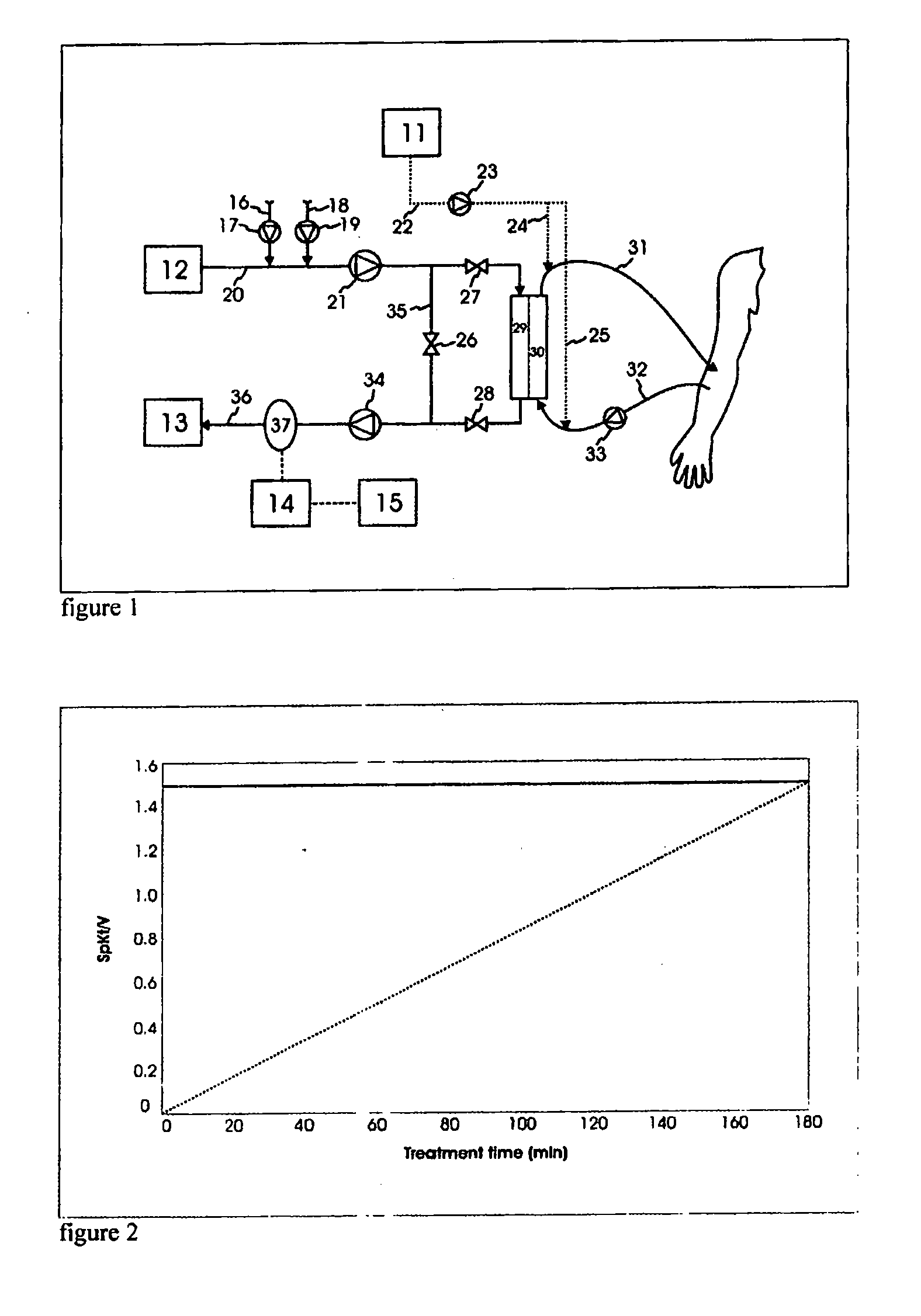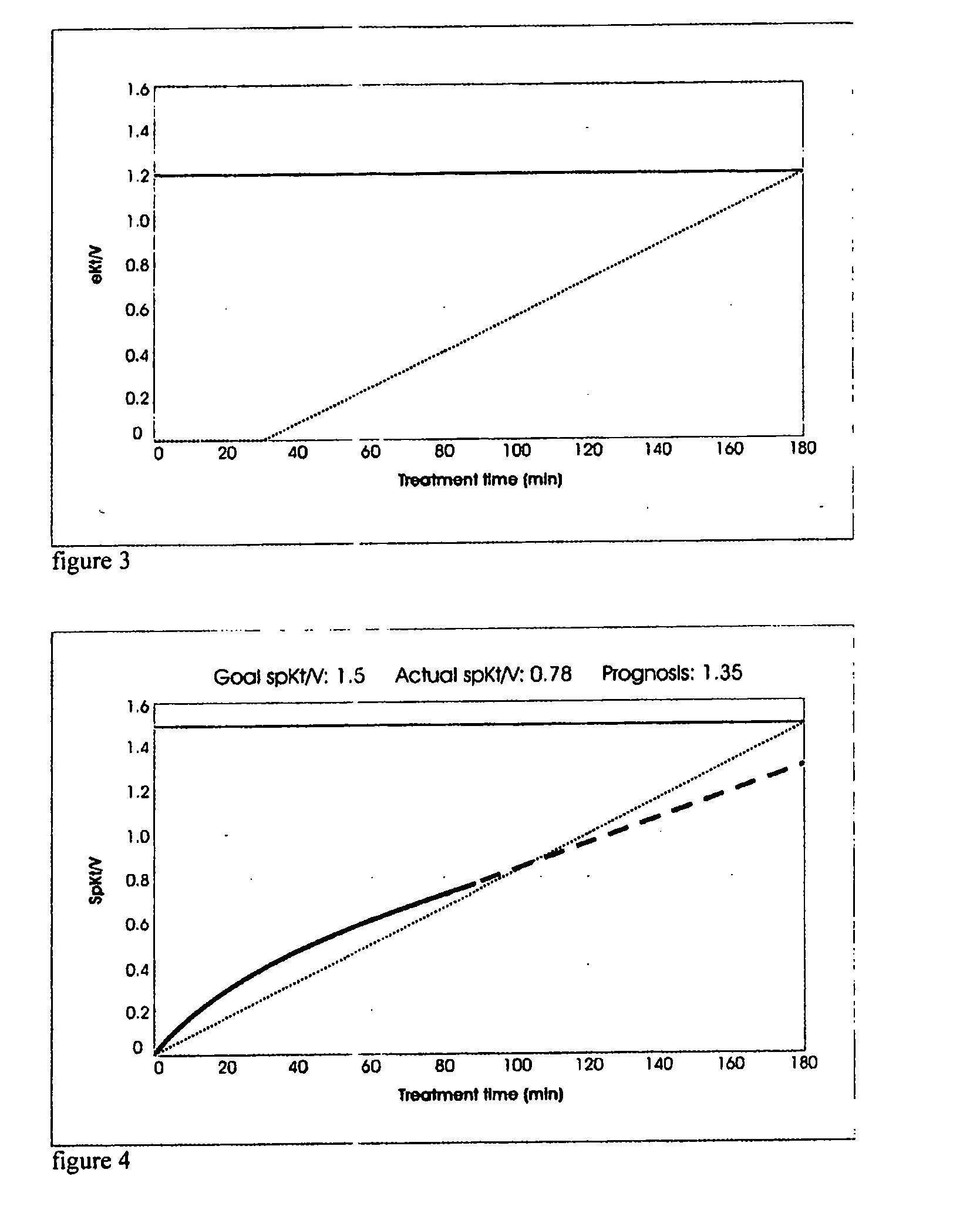METHOD AND DEVICE TO EARLY PREDICT THE Kt/V PARAMETER IN KIDNEY SUBSTITUTION TREATMENTS
a technology of kidney substitution and kt/v parameter, which is applied in the direction of gravity filter, medical devices, feed/discharge of settling tanks, etc., can solve the problems of v estimation along with the multicompartment urea kinetics, and the method has a certain degree of error, and it is not possible to perform any action
- Summary
- Abstract
- Description
- Claims
- Application Information
AI Technical Summary
Benefits of technology
Problems solved by technology
Method used
Image
Examples
Embodiment Construction
[0031]Aspects of the invention are now described with the help of a mathematical derivation.
[0032]FIG. 1 shows a draw of the dialysate circuit of a conventional dialysis machine plus a slight modification to host a sensor coupled with the dialysate circuit. The blood from a patient is taken out into an extracorporeal circuit, it flows through the tube 32 into the blood chamber 30 of a dialyzer and returns to the patient through the tube 31. The flow rate of the blood circuit is controlled by the blood pump 33. The dialysis fluid is made of several concentrates and water, therefore the machine disclosed in FIG. 1 comprises a water inlet 12, two concentrates inlets 16 and 18 and two concentrate pumps 17 and 19. The water flow together with the concentrates flow defines the final properties of the dialysis fluid. The conduit 20 takes the dialysis fluid to the dialysate chamber 29 of the dialyzer, which is separated from the blood chamber 30 by a semi permeable membrane. The dialysis fl...
PUM
| Property | Measurement | Unit |
|---|---|---|
| blood flow rate | aaaaa | aaaaa |
| flow rate | aaaaa | aaaaa |
| reduction ratio | aaaaa | aaaaa |
Abstract
Description
Claims
Application Information
 Login to View More
Login to View More - R&D
- Intellectual Property
- Life Sciences
- Materials
- Tech Scout
- Unparalleled Data Quality
- Higher Quality Content
- 60% Fewer Hallucinations
Browse by: Latest US Patents, China's latest patents, Technical Efficacy Thesaurus, Application Domain, Technology Topic, Popular Technical Reports.
© 2025 PatSnap. All rights reserved.Legal|Privacy policy|Modern Slavery Act Transparency Statement|Sitemap|About US| Contact US: help@patsnap.com



